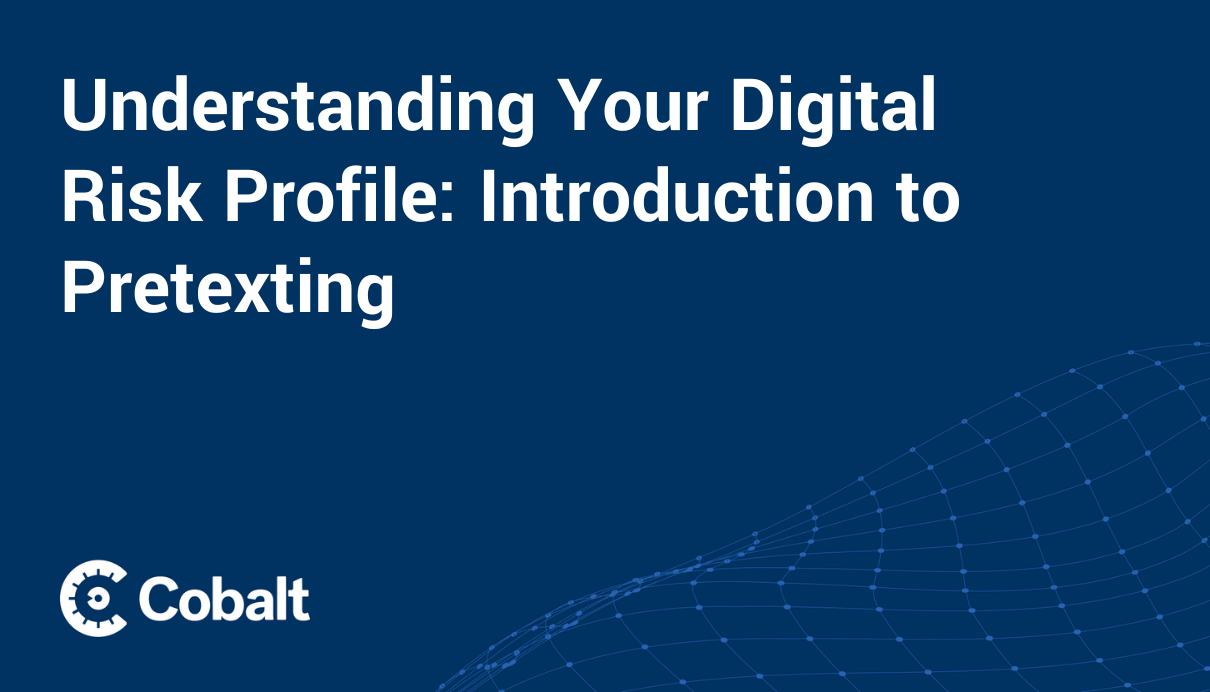Open source intelligence (OSINT) is a cornerstone of cybersecurity and penetration testing. As our digital footprints expand, the ability to harvest and analyze data from public sources has become indispensable for identifying vulnerabilities before they can be exploited, representing a fundamental change in how we approach and mitigate threats.
Despite OSINT's importance, there's still a gap in understanding its full potential and effectively utilizing its techniques.
This challenge doesn't stem from a scarcity of resources but from the sheer volume and variety of tools and methods at our disposal. For example, experts can sift through social media to identify potential security threats, such as finding an employee badge to gain unauthorized physical entry, or they can examine domain information for weaknesses that could lead to a subdomain takeover that could be used for a phishing attack. This creates an environment that is full of possibilities and also complicated to manage.
Below, we'll examine the top OSINT tools and techniques, from sophisticated software enabling real-time data analysis to simpler utilities designed for specific investigatory tasks.
Defining OSINT
OSINT or open source intelligence encompasses the vast expanse of publicly available information (PAI) that can be legally procured and scrutinized to extract valuable insights, evaluate risks, and guide well-informed decisions. This information is not concealed or restricted but rather exists in the open, but it takes a particular set of abilities and dedication to gather, refine, and interpret it effectively.
Within the context of cybersecurity, OSINT plays a pivotal role in amassing intelligence about potential vulnerabilities, weaknesses, and the strategies, methods, and procedures employed by adversaries. For example, OSINT played a role in the 23 & Me breach as a large number of users were using the same login credentials from other accounts – which had been leaked in a previous data breach. This led the attackers to gain unauthorized access to the accounts using OSINT.
OSINT's adaptability is one of its most significant assets. It can be employed to detect immediate threats, support strategic planning, shape security policy development, and facilitate comprehensive risk assessments. For penetration testers, OSINT functions as an essential initial phase or recon phase in emulating attacks on systems, exposing how a malicious actor might collect information to exploit vulnerabilities.
This example highlights two key trends. First, tools are becoming more advanced in their capabilities while also being easier to use. This means that more people can create digital content without needing a lot of training or expertise. Secondly, the rise of 'shadow IT'—where employees use unapproved software or systems—poses a significant risk to security. However, services that specialize in Open Source Intelligence (OSINT) are emerging to help security teams detect and address threats, such as finding company-related domains that the company itself isn't aware of.
Importance of OSINT for Pentesting
One of the primary benefits of OSINT in pentesting is its ability to simulate real-world attack scenarios. By gathering information about an organization's infrastructure, employees, and digital footprint, pentesters can create targeted and realistic test cases that accurately assess the organization's security posture. This approach helps identify weaknesses that may have gone unnoticed, allowing the organization to address them before malicious actors can exploit them.
Moreover, OSINT is a crucial component of threat intelligence such as with a Digital Risk Assessment. By monitoring various public sources, security teams can stay informed about emerging threats, vulnerabilities, and attack techniques. This information can be used to update security policies, patch systems, and educate employees, ultimately enhancing the organization's overall cybersecurity resilience.
Key OSINT techniques
OSINT Techniques for cybersecurity professionals include:
1. Advanced search operators
For example, a pentester might use the search operator "example.com filetype" to uncover a publicly accessible PDF document containing sensitive information about a company's network architecture.
2. Social media monitoring
This is when an OSINT practitioner analyzes a company's LinkedIn profile and discovers that an employee has inadvertently shared details about a new, unreleased product, potentially exposing the company to competitive threats.
3. Metadata analysis
In this case, a security researcher examines the metadata of an image shared on a company's website and finds that it contains GPS coordinates, revealing the location of a confidential meeting.
4. Domain and IP investigation
By researching a company's domain registration information, an OSINT specialist uncovers an unpatched vulnerability in the company's content management system that attackers could exploit.
5. Data breach monitoring
A cybersecurity team monitors data breach forums and discovers that a list of their company's employee email addresses and passwords has been leaked. They promptly reset passwords and implement two-factor authentication to prevent unauthorized access.
6. Geolocation and mapping
Here, an OSINT analyst uses geolocation data from social media posts to map out the locations of a company's remote workforce, identifying potential security risks associated with employees working from unsecured locations.
7. Dark web monitoring
In this case, a security researcher monitors dark web forums and comes across a discussion thread where hackers are planning to target a specific company using a newly discovered exploit. The researcher alerts the company, allowing them to patch the vulnerability before an attack occurs.
Combining data breach monitoring with social media analysis can help identify potential insider threats, such as employees discussing sensitive information on public platforms.
Top 20 OSINT Tools
To effectively leverage OSINT in pentesting and cybersecurity, professionals use a variety of techniques. Some of the key OSINT tools include:
1. Shodan
A search engine that scans for internet-connected devices, providing valuable information on potential vulnerabilities. For example, a penetration tester might use Shodan to identify a target organization's exposed IoT devices, such as security cameras or smart thermostats, which could serve as potential entry points for an attack.
2. Recon-ng
A full-featured web reconnaissance framework that automates the process of gathering information from a variety of sources. A cybersecurity analyst could use Recon-ng to quickly gather data about a target organization's domain names, IP addresses, and email addresses, which can then be used to identify potential vulnerabilities or phishing targets.
3. theHarvester
A tool designed to gather emails, subdomains, hosts, employee names, and open ports from different public sources. For instance, a penetration tester could use theHarvester to gather email addresses of key employees within a target organization, which could then be used in a targeted phishing campaign as part of a social engineering attack.
4. Maltego
Known for its ability to perform link analysis, Maltego helps in mapping out networks and vulnerabilities within an organization. A security researcher could use Maltego to visualize the relationships between a target organization's employees, social media accounts, and external websites, potentially uncovering previously unknown connections or vulnerabilities.
5. Nmap
Nmap is indispensable for network discovery and security auditing, often used alongside OSINT tools for comprehensive analysis. A penetration tester could use Nmap to scan a target organization's network for open ports and services and then use that information in conjunction with data gathered from other OSINT tools to identify potential attack vectors.
6. Spiderfoot
An automation tool that integrates with 100+ OSINT sources to collect and analyze data related to IP addresses, domain names, and more. A cybersecurity analyst could use Spiderfoot to automate the process of gathering data from multiple sources, then use the tool's built-in analytics and visualization features to identify patterns or anomalies that might indicate a potential threat.
7. Metasploit Framework
While primarily penetration testing software, it's used in conjunction with OSINT tools to exploit vulnerabilities uncovered through intelligence gathering. For example, if a penetration tester used Shodan to identify an exposed database server, they could then use Metasploit Framework to attempt to exploit any known vulnerabilities in that server and gain unauthorized access to sensitive data.
8. Aircrack-ng
A suite of tools for assessing WiFi network security, useful for penetration testers in understanding wireless vulnerabilities. A penetration tester could use Aircrack-ng in conjunction with other OSINT tools to gather information about a target organization's wireless network, such as the SSID and encryption type, then use that information to attempt to crack the network's password and gain unauthorized access.
9. OWASP Amass
This open source network scanning tool helps security researchers with attack surface mapping and asset discovery. The tool uses open source information gathering practices and DNS enumeration techniques. This assists security teams identify and map out an organization's internet exposure and enhance security measures.
10. GHunt
An OSINT tool to investigate Google accounts and services associated with an email, providing insights into potential data leakage points. For example, a security researcher could use GHunt to investigate a target individual's Google account and uncover potentially sensitive information, such as their search history or Google Drive files, which could be used in a social engineering attack.
11. OSINT Framework
While a directory is more than a tool, it's an invaluable resource for finding specific OSINT tools for various cybersecurity tasks.
12. BuiltWith
Provides information on the technologies used on websites, which can indicate potential vulnerabilities or technologies to target during penetration testing. A penetration tester could use BuiltWith to identify the content management system (CMS) used by a target organization's website, then cross-reference that information with known vulnerabilities in that CMS to identify potential attack vectors.
13. Creepy
A geolocation OSINT tool useful for gathering location-based data on targets, which can be critical in some penetration testing scenarios. For example, a penetration tester could use Creepy to gather location data on a target individual based on their social media posts and then use that information to craft a more convincing phishing email that references a specific location or event.
14. Intel Owl
Offers threat intelligence from various sources in one place, assisting in the quick identification of threats and vulnerabilities. A cybersecurity analyst could use Intel Owl to quickly gather and analyze threat intelligence data from multiple sources and then use that information to prioritize and respond to potential threats in real-time.
15. Searchcode
Useful for penetration testers in finding exposed code snippets or configurations that may reveal vulnerabilities. For instance, a penetration tester could use Searchcode to search for exposed API keys or hard coded passwords in a target organization's publicly available code repositories. Then use that information to gain unauthorized access to sensitive systems or data.
16. Grep.app
Scans billions of lines of code to find specific patterns, including potentially leaked secrets or misconfigurations. A security researcher could use Grep.app to search for accidentally exposed sensitive data, such as AWS access keys or database credentials, in a target organization's public code repositories.
17. Intelligence X
A search engine and data archive for deep web and public information, useful for uncovering data leaks and other intelligence. For example, a pentester could use Intelligence X to search for mentions of a target organization or individual in data leaks or on the dark web, potentially uncovering compromised credentials or other sensitive information.
18. Google Hacking Database (Dorks)
This is not a tool but a technique that uses advanced Google search queries to find hidden information and vulnerabilities. A penetration tester could use Google Dorks to search for exposed configuration files, database dumps, or other sensitive information that a target organization may have accidentally made public.
19. Dehashed
This tool empowers security researchers with a search engine type experience specifically for leaked data. Researchers use Dehashed to identify compromised assets or personal information that’s leaked online.
20. Have I Been Pwned
This free tool allows users to check if their personal information or data has been compromised in previous data breaches. Simply enter your email address or phone number and then you can set up automatic alerts to learn if your credentials have been found in databases of leaked credentials.
A penetration tester could use multiple tools and techniques during a project. For example, they might use Shodan to identify potential targets and then Recon-ng to gather more detailed information about the target's infrastructure. Finally, Metasploit Framework to exploit any vulnerabilities discovered during the reconnaissance phase.
The list also covers tools that can be used in conjunction with OSINT, such as Maltego for link analysis and visualization and Google Dorks, which is a technique for uncovering hidden information and vulnerabilities using advanced search queries.
Best Practices for Using OSINT tools
The effective use of OSINT requires more than just a collection of tools and techniques. It demands a strategic approach that integrates OSINT into the overall security workflow, ensuring that the insights gained are actionable and relevant. This involves establishing clear objectives, selecting the appropriate tools for the task at hand, and continuously refining the process based on the latest developments in the field.
Moreover, as the volume and complexity of digital data continue to grow, the role of automation and machine learning in OSINT is becoming increasingly crucial. By leveraging these technologies, organizations can process vast amounts of data more efficiently, identify patterns and anomalies that might otherwise go unnoticed, and respond to threats in real time.
Ultimately, the success of OSINT in cybersecurity and penetration testing depends on organizations' willingness to invest in the necessary resources, expertise, and ongoing training. By staying up-to-date with the latest tools and techniques and fostering a culture of continuous improvement and collaboration, organizations can harness the power of OSINT to build a more secure and resilient digital future.
For those looking to take the first steps in incorporating OSINT into their security practices, Cobalt's Brand Protection Report provides valuable insights and guidance. For organizations seeking a more comprehensive assessment of their digital risks, the Digital Risk Assessment offers a tailored approach to identifying and mitigating potential threats.









